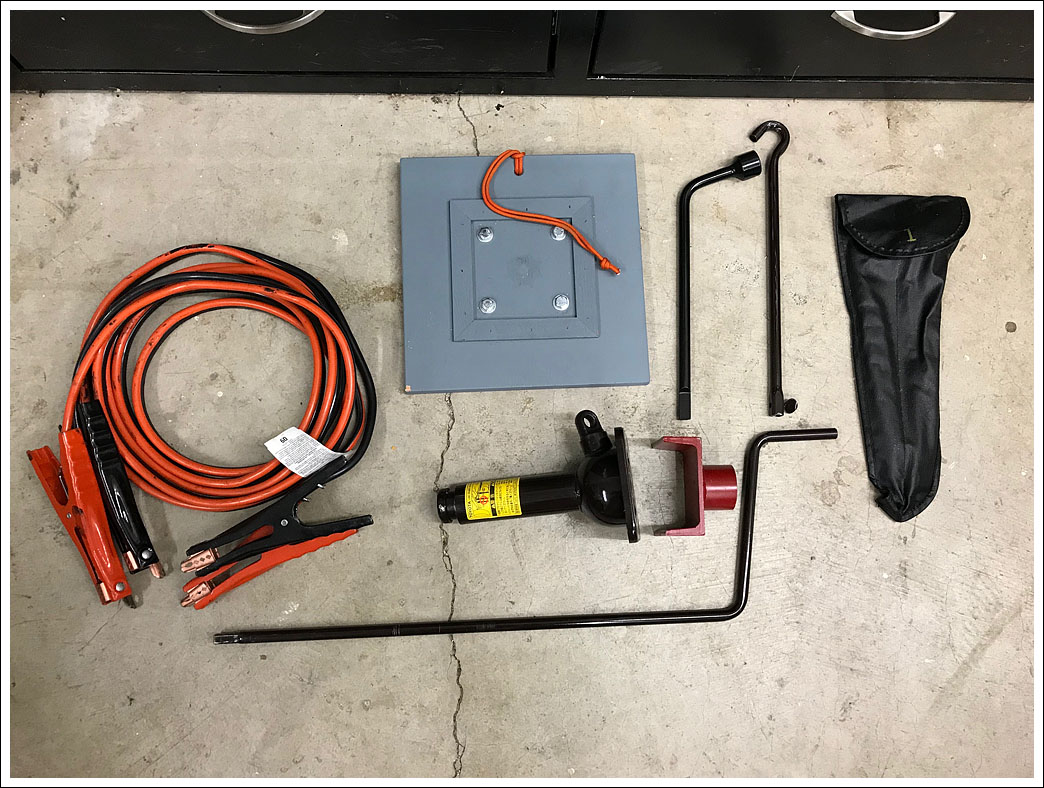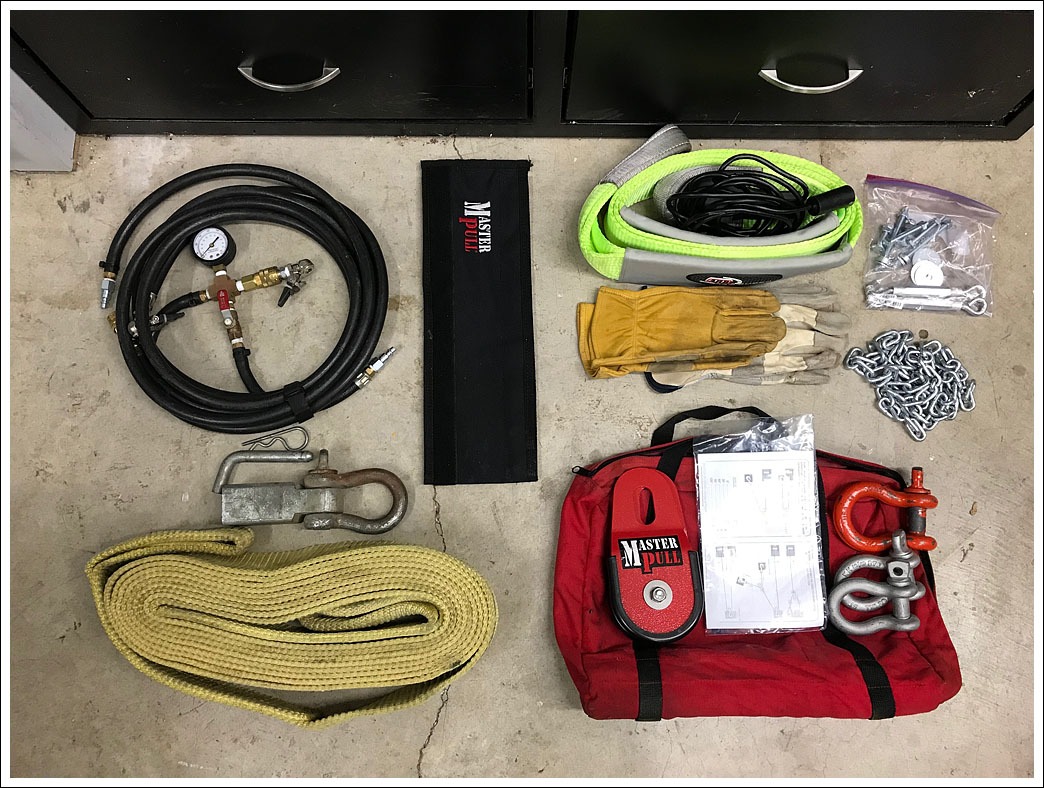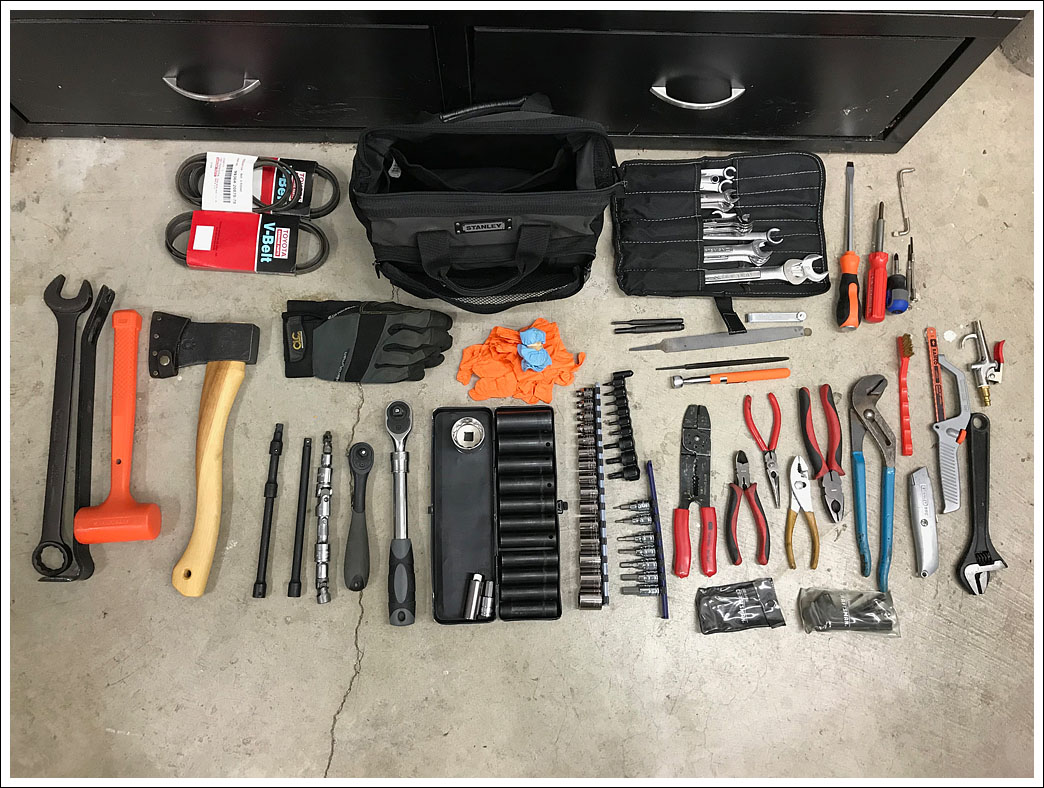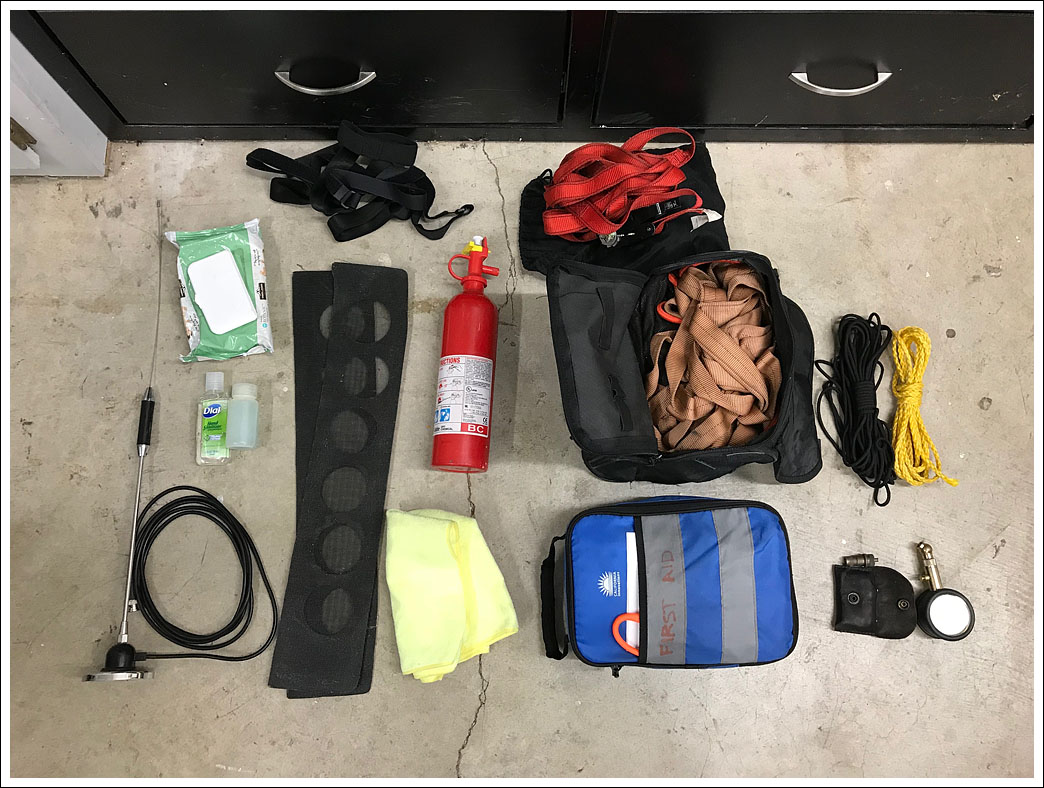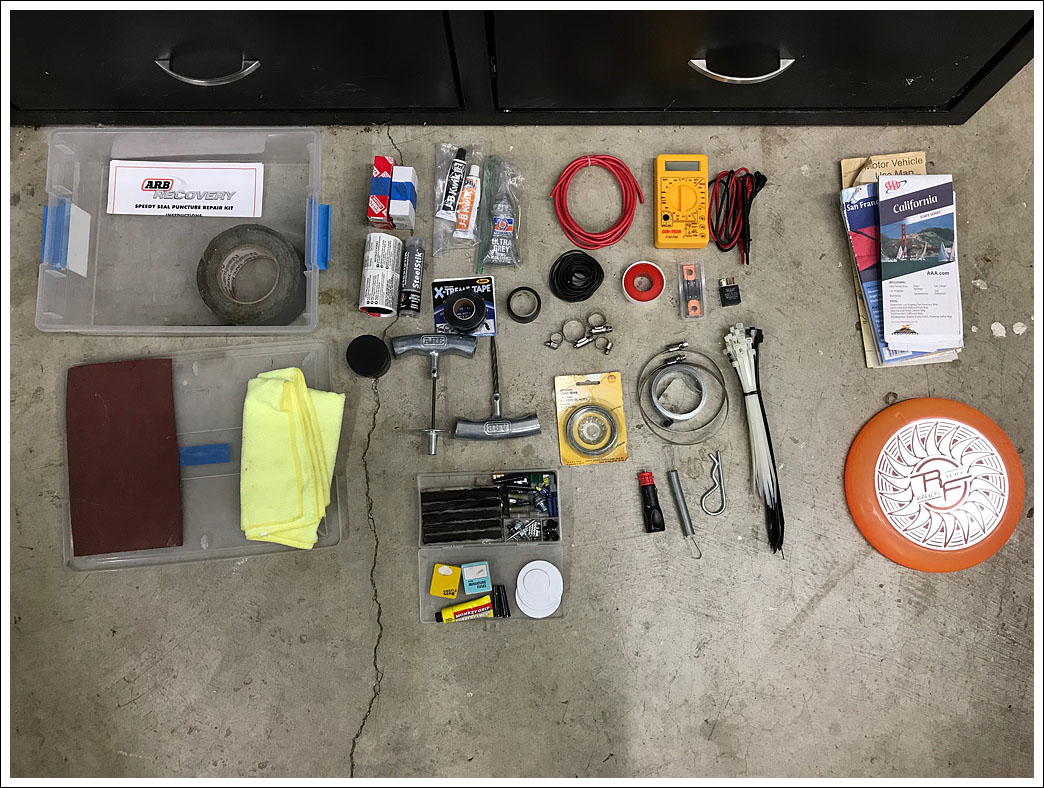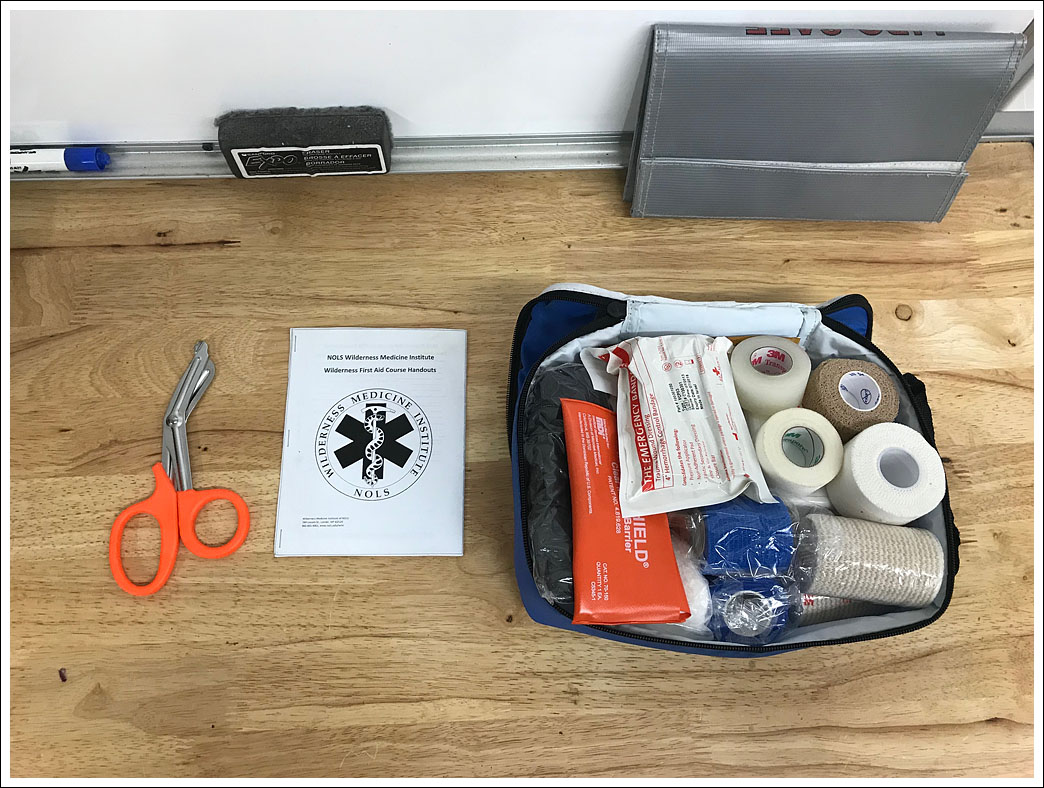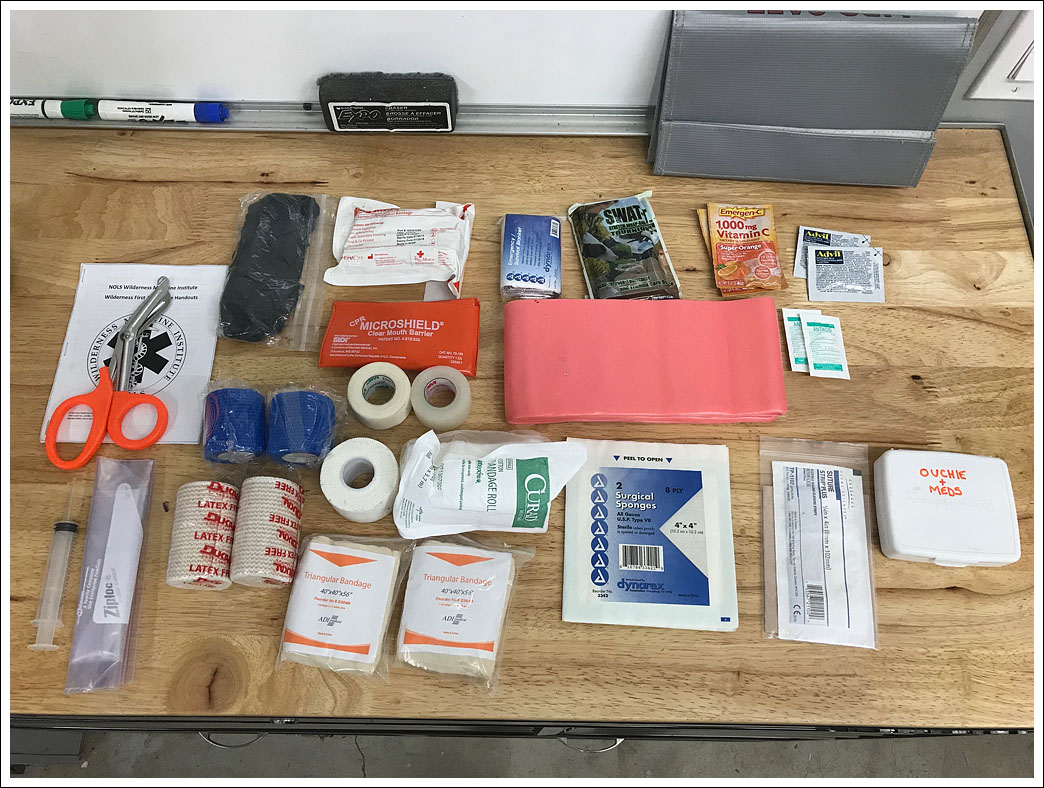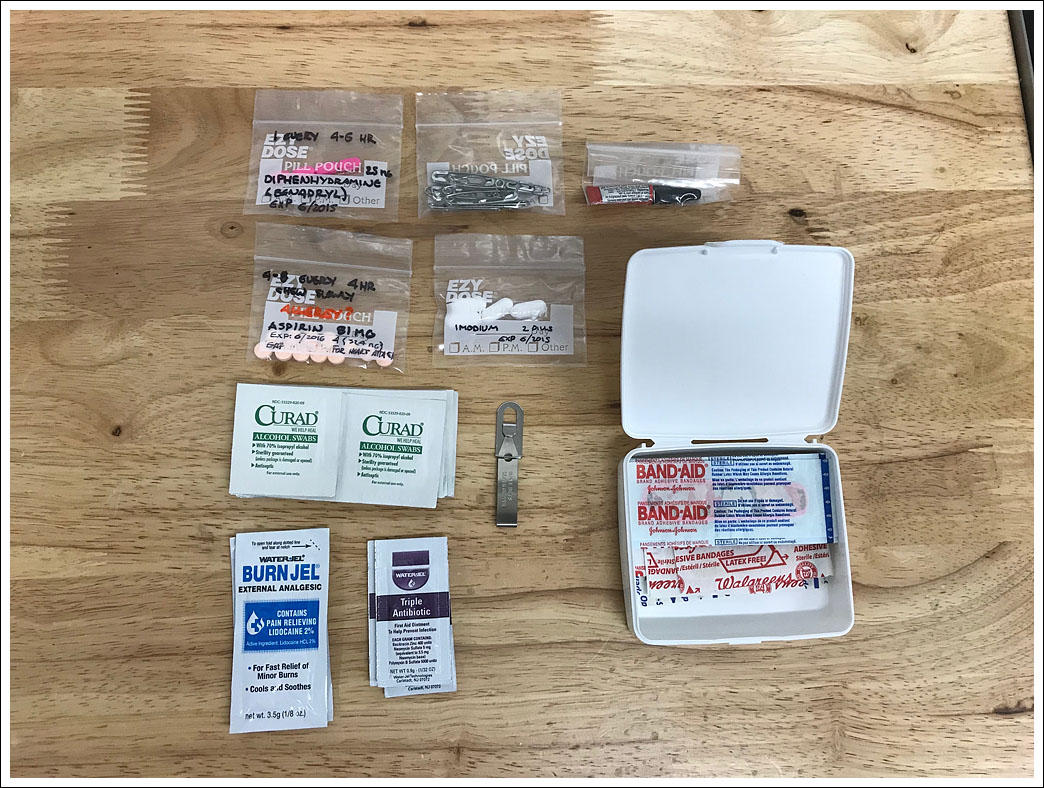This weekend I did an inventory of my truck and decided to take some pictures for my own reference and to share on this site. These are items that are always carried in the truck, with a general goal of trying to keep the weight reasonable while providing a high level of usefulness for vehicle repair and recovery.
Feel free to post if you have any questions, constructive criticism, or suggestions of other items to carry.
Storage
The majority of the items are stored in a custom drawer and the factory cargo cubby. I intentionally only built a half-width drawer because it allows me to store bulky items like kitchen gear on the other side while keeping the center of gravity as low as possible. I also built an extension for the drawer so it can serve as a sleeping platform.

The drawer contains first aid, recovery, and repair items separated into separate bags based on function. The cargo cubby contains a recovery strap and a hitch shackle adapter. The fire extinguisher and first aid kit are at the front of the drawer so they are easily accessible, though I am considering moving them closer to the driver so they are easier to get to.


There is an additional space at the front of the drawer behind the rear seat where I store a jack base and various ropes.
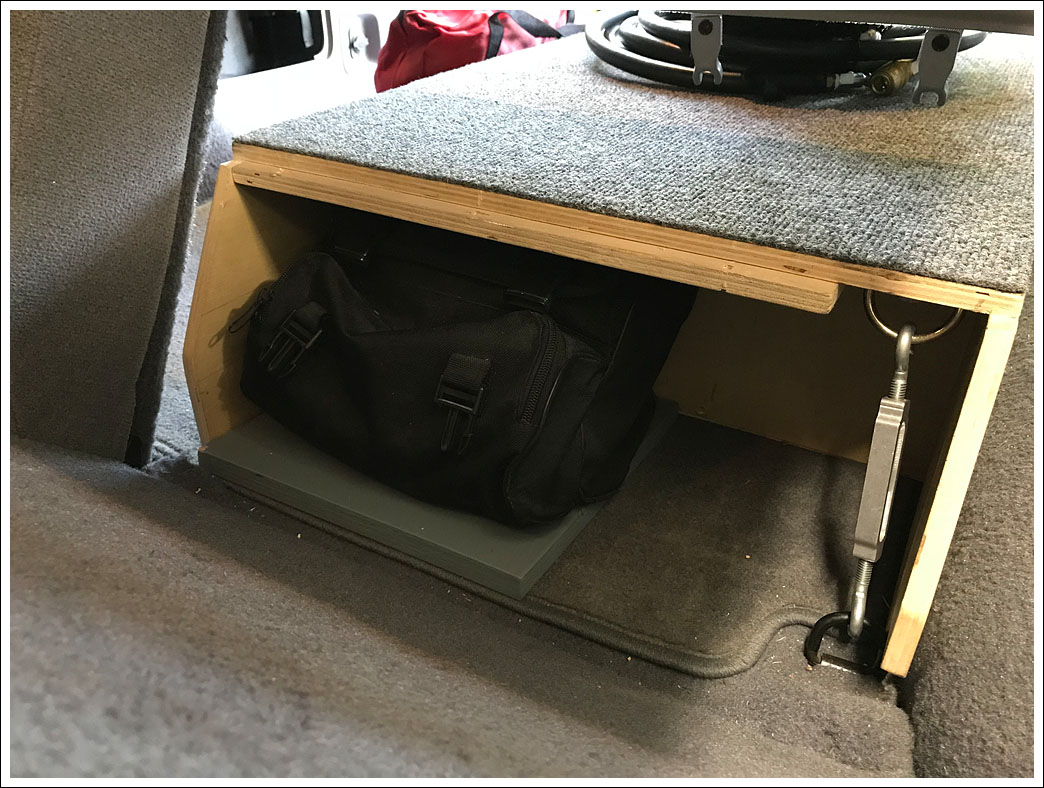
Small parts are stored in a plastic tub under the front seat.

I also have items wedged into the factory storage under the rear seat including the factory jack and a set of jumper cables.

Feel free to post if you have any questions, constructive criticism, or suggestions of other items to carry.
Storage
The majority of the items are stored in a custom drawer and the factory cargo cubby. I intentionally only built a half-width drawer because it allows me to store bulky items like kitchen gear on the other side while keeping the center of gravity as low as possible. I also built an extension for the drawer so it can serve as a sleeping platform.

The drawer contains first aid, recovery, and repair items separated into separate bags based on function. The cargo cubby contains a recovery strap and a hitch shackle adapter. The fire extinguisher and first aid kit are at the front of the drawer so they are easily accessible, though I am considering moving them closer to the driver so they are easier to get to.


There is an additional space at the front of the drawer behind the rear seat where I store a jack base and various ropes.

Small parts are stored in a plastic tub under the front seat.

I also have items wedged into the factory storage under the rear seat including the factory jack and a set of jumper cables.



